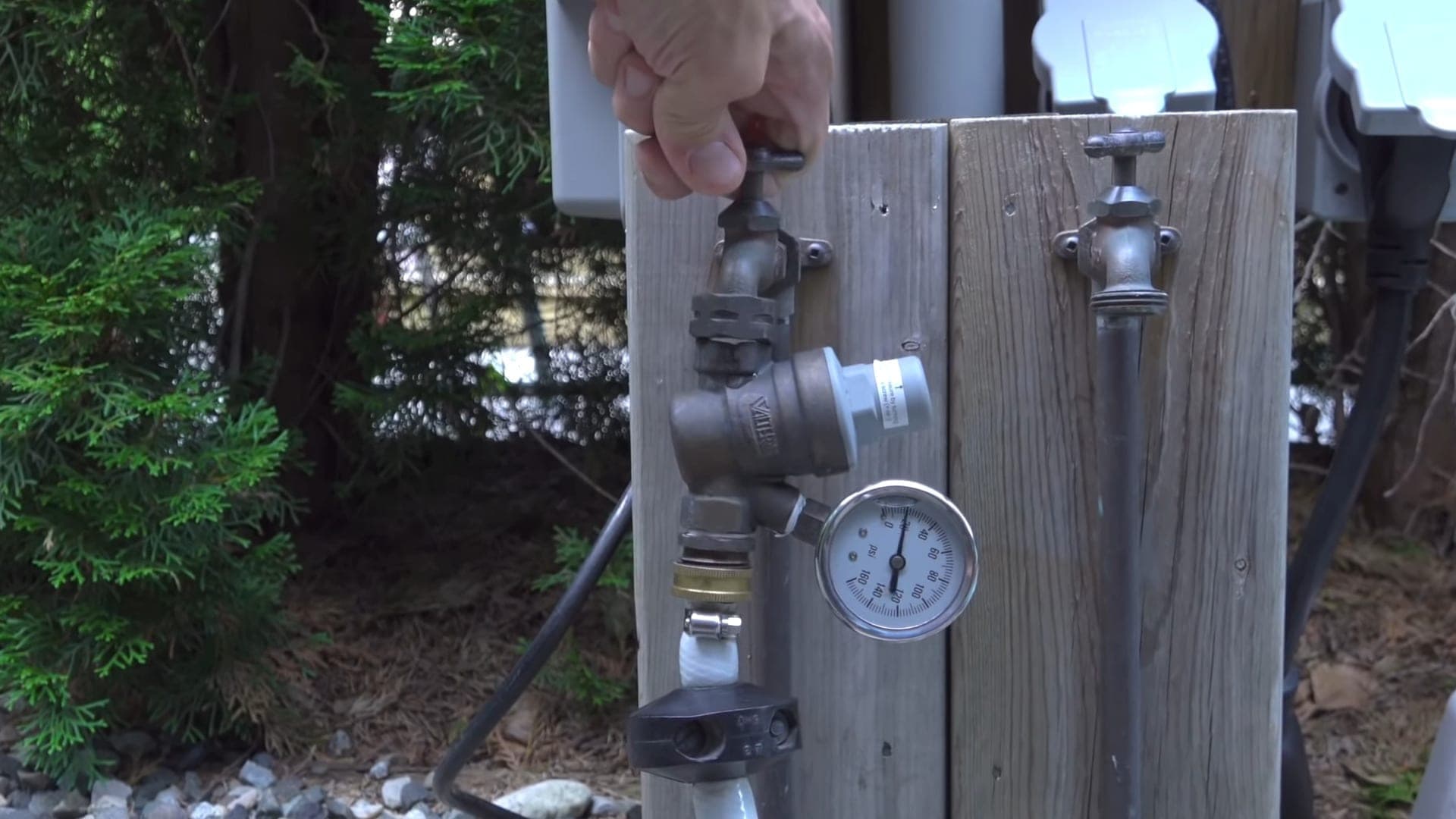Our Complete Instruction to Resolving Low Water Pressure in Your Home
Our Complete Instruction to Resolving Low Water Pressure in Your Home
Blog Article
This article down below involving 10 Reasons for Low Water Pressure in Your House is fairly stimulating. Don't bypass it.

Low water stress in your home can be an irritating problem, affecting everything from bathing to washing dishes. If you're experiencing weak water circulation, there are numerous possible causes and solutions to explore. In this overview, we'll talk about typical reasons for low water pressure and useful actions to attend to the issue effectively.
Intro to Low Tide Pressure
Low water pressure takes place when the flow of water from your faucets, showers, and other components is weak than typical. This can make daily jobs a lot more tough and less efficient. Comprehending the root causes of low tide pressure is vital to finding the ideal remedy.
Usual Causes of Low Water Stress
Faulty Pressure Regulators
Stress regulatory authorities are accountable for preserving constant water stress in your house. If they malfunction, it can lead to low tide pressure or uneven flow throughout the house.
Metropolitan Water Supply Issues
Sometimes, the issue exists outside your home. Municipal water system concerns, such as main line leakages or upkeep job, can temporarily reduce water pressure in your location.
Pipe Obstructions
Over time, pipelines can end up being clogged with natural resource, sediment, or debris, limiting the circulation of water. This is a common issue in older homes with galvanized steel pipes.
Rust
Deterioration within pipes can bring about leakages and minimized water stress. Corrosion accumulation can constrict water circulation, particularly in maturing plumbing systems.
How to Detect Low Water Stress
Examining Pipes
Evaluate visible pipelines for indications of leakages, corrosion, or clogs. Pay attention to any kind of uncommon audios, such as banging or rattling pipes, which might suggest problems within the plumbing system.
Consulting with a Plumber
If you're incapable to pinpoint the cause of low tide pressure, consider hiring an expert plumber to conduct a thorough inspection. They can identify underlying concerns and advise appropriate options.
Inspecting Taps and Fixtures
Start by evaluating the water pressure at different faucets and components throughout your home. If the issue is separated to certain areas, it might suggest localized problems.
Do It Yourself Solutions to Repair Low Water Stress
Flushing Water Heater
Debris accumulation in the water heater can limit circulation and reduce effectiveness. Flushing the storage tank regularly aids remove sediment and keep ideal efficiency.
Inspecting Stress Regulatory Authority
Ensure that the stress regulatory authority is functioning properly. Changing or replacing the regulator can help recover correct water pressure throughout your home.
Cleaning Up Aerators and Showerheads
Mineral deposits can accumulate in aerators and showerheads, decreasing water circulation. Get rid of and cleanse these components routinely to improve water stress.
Clearing Clogs in Pipes
For minor clogs, try making use of a plumbing serpent or chemical drain cleaner to clear obstructions in pipelines. Beware when making use of chemicals and comply with security standards.
When to Call an Expert Plumber
If DIY efforts fall short to resolve the problem or if you think considerable plumbing issues, it's finest to seek aid from a qualified plumber. They have the know-how and devices to address complicated problems safely and effectively.
Safety Nets to Preserve Water Pressure
Mounting a Stress Booster
Take into consideration setting up a stress booster pump to enhance water pressure in locations with consistently low circulation. This can be especially valuable for multi-story homes or residential or commercial properties with high-demand fixtures.
Surveillance Water Use
Bear in mind water usage habits and prevent ill-using the plumbing system. Straightforward adjustments, such as shocking showers and laundry loads, can assist maintain ample water stress.
Routine Maintenance
Arrange routine upkeep for your plumbing system to avoid concerns such as corrosion, leakages, and obstructions. Dealing with minor problems early can help prevent more substantial fixings in the future.
Final thought
Taking care of low water stress can be irritating, however recognizing the underlying reasons and carrying out ideal solutions can bring back ideal circulation throughout your home. Whether it's cleaning aerators, examining pipes, or consulting with a plumber, taking proactive actions can guarantee a stable supply of water for your day-to-day needs.
9 Solutions to Low Water Pressure
If you have ever struggled to rinse the shampoo out of your hair, washed your hands under a trickle of water, or been forced to wait for your washing machine to complete a cycle, then you have experienced the nuisance of low water pressure. Low water pressure can turn a simple task into a hassle, but once you identify the cause, either the necessary plumbing fix or a water booster pump can drastically improve your water pressure. In this article, you can learn about nine common causes of low water pressure and how to resolve low water pressure in your home.
How do you know if you have low water pressure?
Testing your home’s water with a pressure gauge is the easiest way to find out if you have low water pressure. Pressure gauges are simple and inexpensive, and once installed, will allow you to check your water pressure with a quick glance.
If your water is from a municipal water supply, select an outdoor faucet near where the main water line enters your home. If your water is from a well, select a faucet that is close to the well’s pressure tank. Attach the pressure gauge to the faucet and tighten it. To get an accurate reading, make sure water isn’t being used anywhere else inside or outside the house, and then fully turn the faucet on. Once the faucet is on, you can read the water pressure on the gauge’s dial. Typical home water pressure should be between 40 and 50 psi, so if the dial reads less than 40 psi, you have low water pressure.
Do water booster pumps increase water pressure?
A water booster pump is a centrifugal pump that improves low water pressure and increases water flow. Much like how a fan’s blades create a gust of air, a water booster pump’s rotating impeller draws water in and then pushes it out with increased force. This force raises the water pressure in a system. A water booster pump is installed where the main water line enters your home, so water pressure is improved in every tap and appliance.
What causes low water pressure?
1. Hard water
If you have hard water, scale can accumulate in your pipes, restrict the water flow, and reduce your water pressure. Hard water has a high mineral content, specifically calcium and magnesium, and scale is formed when these mineral salts dissolve.
The solution: When scale buildup is severe enough to restrict water flow and reduce water pressure, the best solution is to replace your pipes. Products like CLR Calcium, Lime, and Rust remover can diminish scale, but as the scale comes off it may clog your pipes, creating another costly plumbing problem. Not to mention, it is never a good idea to put harsh chemicals in the pipes that supply your drinking water. To prevent scale in the future, we recommend installing a water softener.
The main water shut off valve is not open.
If your water pressure has suddenly decreased and you recently had a repair done, make sure the main water shut off valve is fully open. Most plumbing repairs require the water to be shut off, but if the valve is not completely opened afterward, your water pressure will be restricted.
The solution: Locate your main shut off valve, which is installed where the main water line enters your home, and fully open it by turning it counterclockwise.
A municipal water problem
Low water pressure may not have to do with your own plumbing system. Just like your home’s water supply, the municipal water supply is subject to problems that can cause low water pressure, such as leaks and corrosion.
The solution: Call the municipal water supply to report your low water pressure. Your input may alert them to the problem and will ensure your water pressure is restored as quickly as possible.
Faulty pressure regulator
A pressure regulator is a valve that reduces incoming water pressure as water flows into your home from the main service line. High water pressure can damage pipes and plumbing fixtures, so a pressure regulator is installed to protect your home plumbing system. Most are set to 50 pounds per square inch (psi), but if yours is set lower, your water pressure will feel low. If your pressure regulator is set to 50 psi but your pressure still feels low, it may be broken or clogged.
The solution: Adjust your pressure regulator’s setting to 50 psi if it is currently set lower. If your pressure regulator is faulty, ask a plumber to replace it.
A leak
A leak can reduce water flow and water pressure. To determine if you have a leak, turn all the faucets off inside and outside of your home. About an hour later, check your water meter. If it indicates you are using water, you have a leak.
The solution: Enlist the help of a licensed plumber to locate and repair the leak. Once the repairs are complete, your water pressure should return to normal.
https://www.freshwatersystems.com/blogs/blog/what-causes-low-water-pressure-and-how-to-improve-it

Hopefully you liked our excerpt about Low Water Pressure in the House?. Thanks a ton for taking the time to browse our blog post. Sharing is nice. You just don't know, you might be doing someone a favor. We treasure your readership.
Go Company Report this page